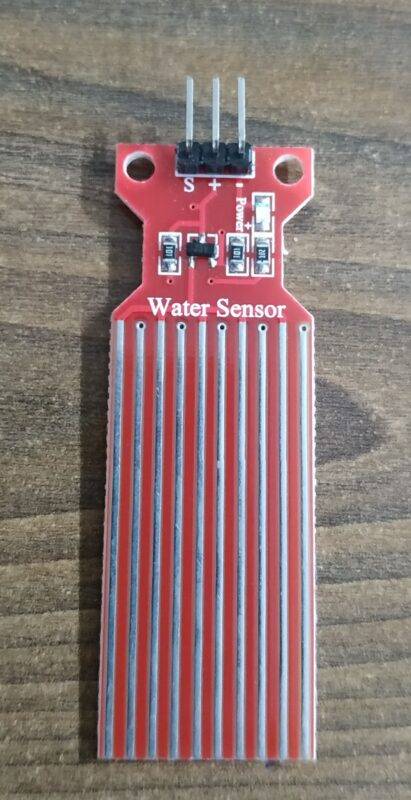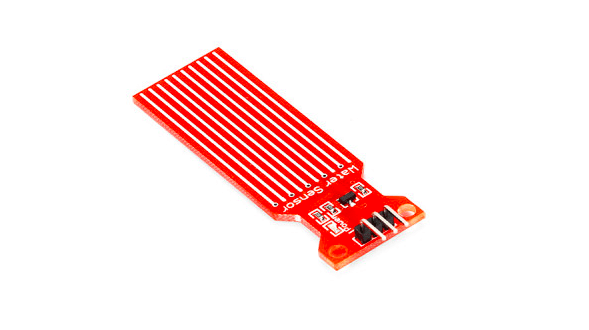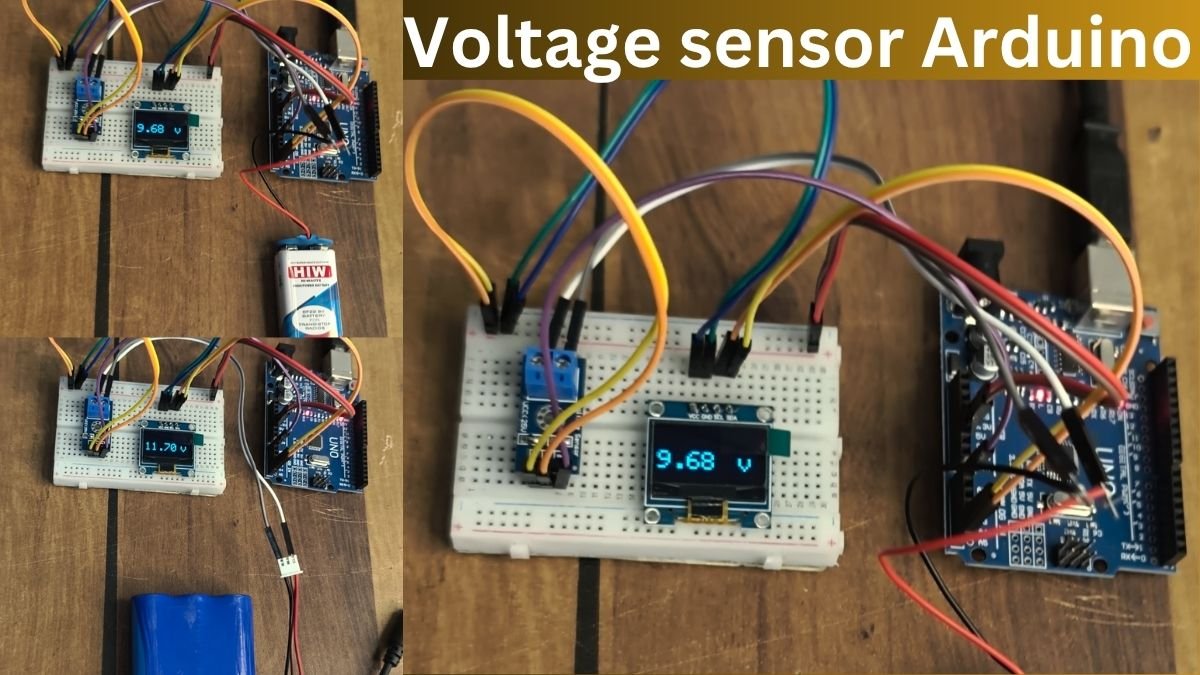The water level sensor has a very simple schematic which makes it up but despite which is rather very interesting to learn, let’s learn further. The water level sensor is a widely used sensor. you can see this sensor in the water level detector and many other places. water level sensors can be used in our daily life usable things.

- It comes in single PCB and The circuit part is very small as compared to the sensing part. Or we can say that the 80% area of the sensor is for the sensing part.
- There are many other versions of the water level sensor available in the market which are quite effective as compared to this one.
- But Today I’m demonstrating the most simple and commonly available Water Level sensor in the market. The link to buy it is here , ROBU.IN.
- One of the most important thing that you have to keep in mind that it only gives Digital output unlike other sensors which gives both output most commonly.
Table of Contents
Water Level Sensor Construction
- Above is the schematic of the water level sensor, which I have drawn myself from a sensor lying around as always. The schematic seems to be quite easy and simple.
- It consists of only a S8050 SMD transistor, which is an NPN transistor. For it’s better understanding of it’s working and type of output, visit projects based on it.
- As in the Soil Moisture sensor article, I have clearly mentioned that due to long time exposure of sensing area of the sensor, it accumulates a layer of salt. Similarly, in this also it accumulates a layer of salt so clear the layer timely for proper reading.
- One of the major drawback of this sensor is that due to its very simple schematic it’s value cannot be controlled also the signal cannot be boosted or compared as in other sensors.

How does the Water Level Sensor Works?

- The working of this sensor is similar to its schematic, very simple and easy to understand. As in the above circuit diagram, you can see that the sensing area is marked with blue lines.
- The S8050 sensor works as a switch in this sensor. The base of the transistor is connected to the one series of lines of the sensing area.
- The other series is connected to the emitter of the transistor with 1 kΩ resistor in series. The emitter is connected to GND and Signal pin via a 100 Ω resistor in series.
- The collector pin of the transistor is connected to the VCC of the sensor. The onboard status LED is also connected to the emitter pi of the sensor with 1 kΩ resistor in series.
Application of water level sensor
- Water level detection in the water tank to measure the level of the water inside the tank.
- we can use this sensor in the air cooler to prevent the overflow and less amount problem
- we can use this sensor into the lead-acid battery to measure the level of acidic water inside the battery
- we can use this awesome sensor into the irrigation in the rural area also we can monitor the level of the water.
- we can use this water level sensor to measure the water inside the RO machine of water.

Advantages & Disadvantages
Advantages:
- The main advantage is the simplicity of the sensor that a beginner can also use it easily and easily to build schematic even on a piece of PerfBoard.
- The working voltage level has an input of 40V, which covers all the popular Development board and microcontrollers.
- The sensor can also be built on the large scale as required by the user, as the schematic is so simple and requires only few active and passive components.
- With the help of mounting holes, you can easily mount the sensor anywhere of the surface or custom-built the PCB for the same.
- More advanced version and different types of water level sensor are also available which works differently, but the output is same.
Disadvantages:
- The main disadvantage of the sensor is the single type of OUTPUT it gives. The sensor should be modified to give the ANALOG value of the water level with respect to physical water level, which is much more useful than DIGITAL values.
- Open traces on the sensor PCB for the sensing of the water is not galvanized, as a result it deposits a layer of salt over then over a period of continuous use or time.
- There is no such way to control the logic level of the OUTPUT signal as it depends on the input voltage, so it needs to be connected with the microcontroller power pins.
FAQ
Q. What is the Maximum working voltage of the Water Level Sensor?
The maximum working voltage of the Water Level Sensor is 40 V which is the same as the signal logic level
Q. How to prevent the deposition of a layer of salt on the traces of PCB?
You either apply a layer of solder to the traces or galvanize the traces as per your custom-built PCB.
Q. What type of OUTPUT is given by Water Level sensor?
The sensor only give digital OUTPUT which is at the logic level of the input voltage.






